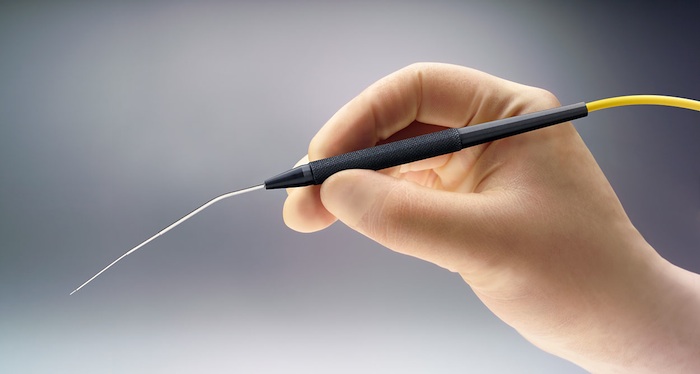 Minas N. Artopoulos M.D.
Minas N. Artopoulos M.D.
Otorhinolaryngologist, Head & Neck Surgeon
Director of Neck-Thyroid Division at the MITERA Otorhinolaryngology Head & Neck Surgery Department
What is LASER?
Laser is an abbreviation for Light Amplification by Stimulated Emission of Radiation. It was invented by Gorden Gould in 1958, USA.
Lasers can be visible or invisible. Visible lasers produce light of shorter wavelength in the visible spectrum seen by human eye. Example: Argon, KTP 532 laser, and Nd: YAG Laser. Invisible lasers have longer wavelengths, example CO2 lasers.
What are the different types of LASERs used in ENT?
The different types of laser most commonly used in otolaryngology:
1. CO2 Laser: It produces a continuous wave of coherent light at a wave length of 10600 nm which is absorbed by water and soft tissues. It has high precision and sequentially removes layers of cells.
Advantages of CO2 laser:
Bloodless dissection: The laser beam can seal blood vessels up to 0.5 mm in diameter.
Immediate tissue destruction by instantaneous vaporization
Minimal instrumentation required to deliver the laser beam
Minimal damage to adjacent tissue with minimal post-operative oedema.
2. Argon Laser: Produced by Argon gas with blue green visible light of 488-514 nm.
It has high photo coagulation power
There can be moderate surrounding tissue damage
3. KTP – 532: (Crystal of potassium titanyl phosphate)
Produce by a blue-green visible light of 532 nm
Does not require an aiming beam
Absorption high in vascular tissue
Moderate surrounding tissue damage
4. Nd: YAG: Crystal rod of Yttrium aluminium garnet with neodymium ions.
Produces infrared light of 1064 nm
Requires an aiming beam
Absorption good in vascular tissue
Moderate surrounding tissue damage
What are the indications of Laser?
CO2 laser is most commonly used in ENT.
Larynx: Done with microlaryngoscopy for juvenile laryngeal papillomas, laryngeal web, vocal nodules, capillary haemangioma, T1 carcinoma of mobile vocal cords, arytenoidectomy and subglottic stenosis
Oral cavity: Debulking of large inoperable tumours, tonsillectomy in cases of blood dyscrasias, superficial lesions and palatal surgeries like uvulopalatopharyngoplasty
Nose: Inverted papilloma, haemangioma, nasal polyps, turbinectomy and nasal tumours. This is combined with sinoscopy
Tracheobronchial tree: Respiratory papillomatosis, tracheal stenosis, granulation tissue, bronchial adenoma
Ear: Myringotomy, stapedectomy, Acoustic neuroma.
What are the complications of Laser?
Ocular Injuries: Infrared light produced by laser can cause corneal and retinal injury. Hence, protective glasses must worn by surgeon, staff and anaesthetist
Cutaneous injuries: Direct and reflected laser energy can cause skin burns to the patient and others in the operation theatre
Damage to surrounding structures like trachea, oral cavity and vocal cords
Anaesthetic complications: Damage to endotracheal tube can lead to fire from direct or reflected laser beam.
Hence the endotracheal tube is coated with an aluminium foil and proper selection of the anaesthesia gases is made.






